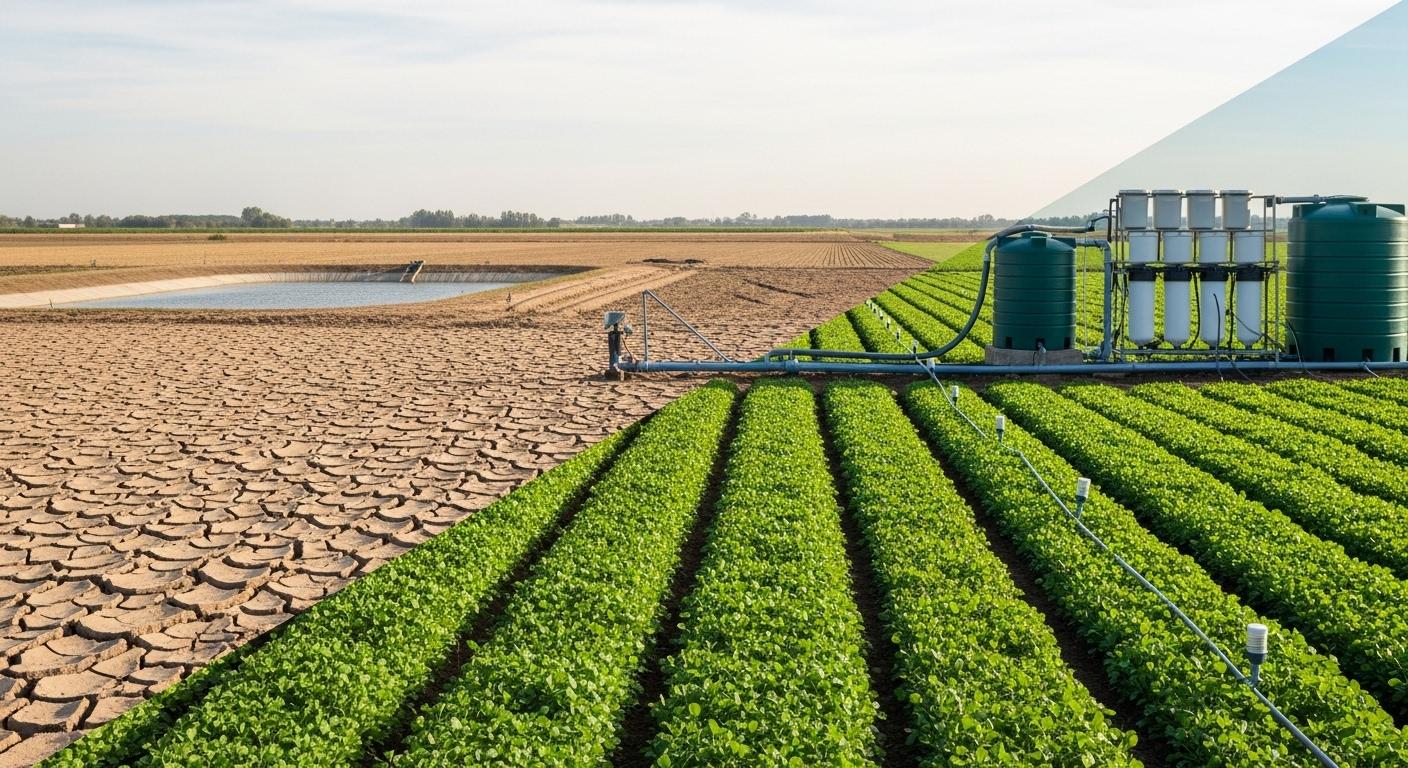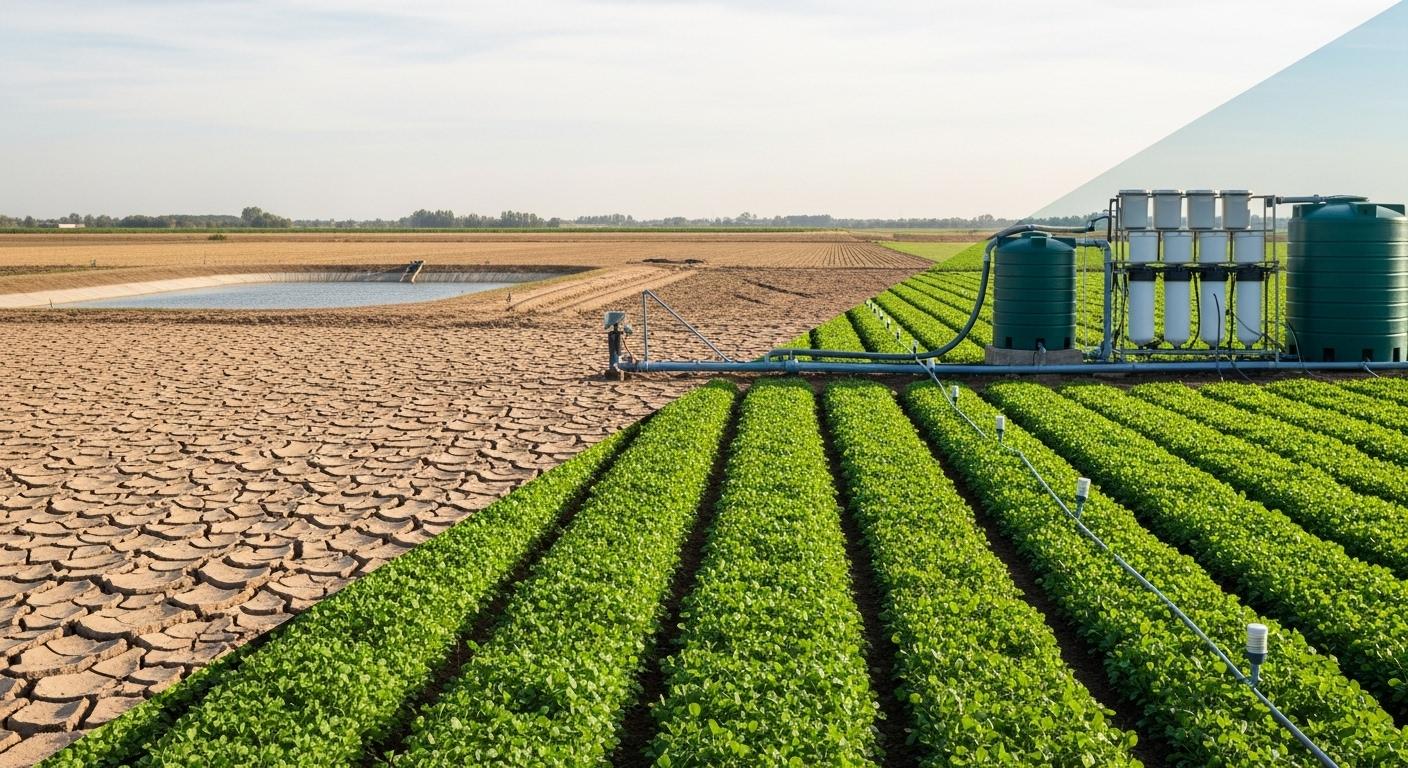Climate change, drought, and the gradual depletion of water resources are increasingly threatening agricultural production. Growing populations and rising production costs are pushing farmers to use water more efficiently. In this process, water management becomes critically important for both economic and environmental sustainability.
So, what measures can farmers take against water scarcity? Let’s examine the most effective short-term and long-term strategies together.
Switching to Modern Irrigation Systems
The most effective step in combating water scarcity is choosing high-efficiency irrigation methods.
Drip Irrigation
- Provides 40–60% water savings
- Water is delivered directly to the root zone, minimizing losses
- Works in harmony with fertilization (fertigation)
Sprinkler Irrigation
- High efficiency on large agricultural areas
- Ensures uniform water distribution
- Requires proper energy and pressure management
Modern irrigation systems consume significantly less water compared to traditional methods like flood (wild) irrigation.
Preventing Water Loss Through Filtration
Dirty water causes clogging in drip irrigation lines and leads to uneven irrigation. This results in wasted water and increased energy consumption.
Filtration systems include:
- Hydrocyclone filters
- Disc filters
- Screen (mesh) filters
- Automatic backwash filters
Proper filtration extends the lifespan of the irrigation system and ensures even water distribution across the field.
Building Water Storage and Harvesting Systems
Water storage solutions are highly effective, especially in dry seasons when accessing water becomes more difficult.
Effective storage methods include:
- Rainwater harvesting
- On-farm ponds
- Concrete or steel water tanks
- Underground reservoirs
Rainwater harvesting has become one of the fastest-growing sustainable practices among farmers in recent years.
Using Practices That Increase Soil Moisture
Increasing soil moisture significantly reduces the need for irrigation.
These practices include:
- Mulching
- Adding organic matter
- Avoiding soil compaction
- Using proper tillage techniques
Mulching alone can reduce evaporation by 20–30%.
Choosing Drought-Resistant Crop Varieties
Some crops can produce high yields with minimal water.
Examples include:
- Sorghum
- Chickpeas
- Lentils
- Sunflower
- Dryland wheat varieties
Choosing the right crop plays a critical role in water conservation.
Using Smart Irrigation Technologies
Sensor-based systems allow farmers to measure irrigation needs in real time.
Smart irrigation tools include:
- Soil moisture sensors
- Pressure sensors
- Automatic timers
- Flow meters
- Mobile-app-controlled systems
These technologies reduce both water usage and energy costs.
Preventing Water Leaks Through Regular Maintenance
Leaks and blockages in irrigation systems can cause severe water loss if not detected early.
Components to inspect regularly:
- Drip lines
- Sprinkler heads
- Filter units
- Pump connections
- Pipe joints
Performing maintenance several times a year maximizes water savings.
Creating an Irrigation Plan
One of the most important steps in water management is proper planning.
An irrigation plan should include:
- Water requirements of the crop
- Weekly irrigation schedule
- Seasonal evaporation rates
- Soil water-holding capacity
- Condition of the water source
With proper planning, unnecessary irrigation can be reduced by up to 30%.
Efficient Farming Is Essential to Combat Water Scarcity
Water scarcity is not only a challenge for today but also one of the biggest threats to the future of agriculture. Adopting modern irrigation systems, using filtration, implementing smart water-management technologies, and applying sustainable farming practices help farmers increase yield while conserving water.
Saving water through the right methods doesn’t just reduce production costs — it also secures the future of agriculture.


